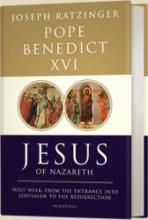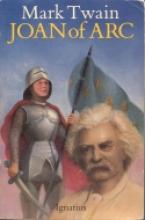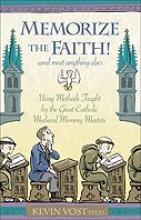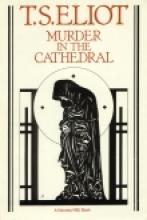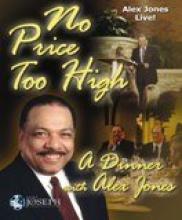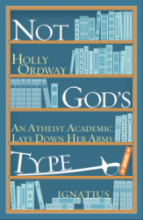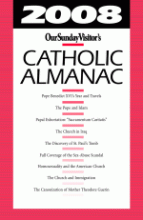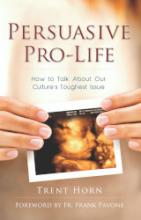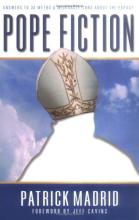Religion High School
Jesus of Nazareth, Holy Week
Faith in Christ's return is the second pillar of the Christian confession. He who took flesh and now retains his humanity forever, he who has eternally opened up within God a space for humanity, now calls the whole world into this open space in God, so that in the end God may be all in all and the Son may hand over to the Father the whole world that is gathered together in him. Herein is contained the certainty of hope that God will wipe away every tear, that nothing meaningless will remain, that every injustice will be remedied and justice restored. The triumph of love will be the last word of world history. Vigilance is demanded of Christians as the basic attitude for the 'interim time'. This vigilance means, on the one hand, that man does not lock himself into the here and now and concern himself only with tangible things, but that he raises his eyes above the present moment and its immediate urgency. Keeping one's gaze freely fixed upon God in order to receive from him the criterion of right action and the capacity for it - that is what matters. Vigilance means first of all openness to the good, to the truth, to God, in the midst of an often meaningless world and in the midst of the power of evil. It means that man tries with all his strength and with great sobriety to do what is right; it means that he lives, not according to his own wishes, but according to the signpost of faith.
Joan of Arc
So who is qualified to tell this story? Another saint? A theologian? A soldier? What about just a good American story-teller -- indeed the best -- but a man with hardly any faith at all?
Mark Twain is most famous for his Mississippi River stories, Tom Sawyer and Huckleberry Finn. It is not well enough known that his own favorite of all his works was the life of St. Joan of Arc, told from the fictional perspective (but this is the only fiction in the book) of a childhood companion who accompanied her on her wars, and then smuggled himself into her trials as a court reporter and was the last to touch her hand before she died.
Mark Twain really loved Joan and he dedicated the entire fiber of his wonderful talent to telling her story. I see him in the year 1910, knocking at the Pearly Gates, and I see Peter's hesitation, for Twain was after all, something of an unbelieving old cynic. But over Peter's shoulder, I see a slight and mischievous lass tugging his sleeve and saying with a grin, "Let him in, now, let him in!" while a Voice thunders from the Throne, "Any friend of Joan's is a friend of Mine."
Read it yourself, silently or aloud to the family, and see if you don't agree.
Memorize the Faith! (and Most Anything Else): Using the Methods of the Great Catholic medieval Memory Masters
Murder in the Cathedral
Various editions available
No Price Too High and A Dinner with Alex Jones
DVD 2 hours, 20 minutes
Not God's Type
Our Sunday Visitor's 2008 Catholic Almanac
Part One: News and Events: The Year in Review and News in Depth(includes segments on Pope Benedict XVI, Papal Documents and Announcements, Special Reports on International News, Special Reports on National News, Life Issues and Meetings of U.S. Bishops) Part Two: The Teachings of the Catholic Church Doctrine of the Catholic Church, Glossary, The Church Calendar, Liturgical Life of the Church, The Sacraments of the Church and The Communion of Saints. Part Three: The Church Universal Dates and Events in Catholic History, The Papacy and the Holy See, The Roman Curia, Hierarchy of the Catholic Church, The Universal Church, Eastern Catholic Churches, The Catholic Church in the U.S., United States Hierarchy, Biographies of American Bishops, United States Conference of Catholic Bishops, Minority Catholics in the U.S., Statistics of the Church in the U.S., The Catholic Church in Canada, The Catholic Church in Mexico. Part Four: The Life of the Church in the World Consecrated Life, Apostolates and Ministries, Catholic Social Services, Education, Catholic Communications, Ecumenism and Interreligous Dialogue, Separated Eastern Churches, Reformation Churches, Interreligious Dialogue.Although this is a complete list of main categories and general topics, it doesn't give a sense of the detail and usefulness of the overall content. I'll try to give a few examples that might be particular useful to Catholic homeschool families, to give a sense of the content: In the section on "The Papacy and the Holy See" from Part Three, you'll find (among other things) a complete lists of popes as well as a more detailed overview of the Popes of the 20th Century. Here's a one of the segments (entitled "Peace Efforts") of the mini-biography of Pope Pius XII, who was Pope during World War II. I think this gives a good sense of the important facts which have been carefully chose and supported in the text:
Before the start of World War II, he tried unsuccessfully to get the contending nations - Germany and Poland, France and Italy- to settle their differences peaceably. During the war, he offered his services to mediate the widened conflict, spoke out against the horrors of war and the suffering it caused, mobilized relief work for its victims, proposed a five-point program for peace in Christmas messages from 1939 to 1942, and secured a generally open status for the city of Rome. He has been criticized in some quarters for not doing enough to oppose the Holocaust. This is a matter of historical debate, but it is a fact that through his direct intercession many thousands of Jews in Rome and Italy were saved from certain death, and he resisted wherever possible the threat of Nazism to human rights. Such were his contributions to assisting Jews that the rabbi of Rome, Dr. Abraham Zolli, was converted to Catholicism, and upon his death, Pius was praised by Golda Meir for his efforts. After the war, he endorsed the principles and intent of the U.N. and continued efforts for peace.Also, in the same overall section is a 36 page country-by-country overview of Catholic statistics (number of religious, Catholic population, percent of the total population that is Catholic and things like that) and a paragraph briefly explaining the history of the faith in each country. It's a wonderful supplement to geographical studies and a place to find interesting information on current missionary efforts of the Church. I could readily imagine homeschool families choosing countries with small minorities of Catholics (such as Turkmenistan, which has only two priests to serve a population of approximately 1000 Catholics). Here is a list of some of the other resources contained in this Almanac that may be of interest (there are many, many more besides these):
- Books of the Bible (including information on books that are rejected by Protestant denominations and overviews of each book)
- A mini Old Testament Bible timeline
- A list of Apostolic Fathers, Fathers of the Church and Doctors of the Church with a brief biography of each
- A 32 page Catholic Glossary
- A detailed liturgical calendar
- An overview of major Holy Days and other Observances
- Extensive listing of saints, including a list of traditional Patrons and Intercessors and recent Canonizations
- A ten page timeline of Catholic History
- A listing of all Papal Encyclicals from 1740 to the present day (The most recent encyclical included here is Deus Caritas Est)
- A Chronology of U.S. Catholic History
- A list of missionaries (with very brief biographies) to the Americas
- Lists of Cathedrals, Basilicas and Shrines in the United States
- An extensive listing of Catholic Colleges and Universities, including website and phone number, and current enrollment.
Persuasive Pro Life
In Persuasive Pro-Life, Trent Horn draws from his extensive experience as both a pro-life advocate and trainer of other advocates to teach us how to be effective advocates for life wherever God has placed us. He covers what to say and how to say it, dos and don'ts, and specific strategies that can effectively persuade. He also shares mistakes he's made and what he's learned from them, which both allows us to benefit from his errors as well as points to the right attitude toward our own inevitable mistakes.
The publisher describes Horn's book this way:
"Are you scared to talk about abortion? Don't worry—almost everyone is. Either we think the subject is too impolite, or we don't want to be branded an [sic] intolerant fanatic, or we're afraid we won't represent the pro-life side well enough. Whatever the reason for this fear, it causes many of us pass up opportunities to speak out on behalf of the unborn. You can overcome this fear, says Trent Horn in his new book Persuasive Pro-Life. With a little knowledge and a few proven techniques, you can become a bold and effective apologist for life."
His favorite approach is to use questions to spark a dialogue or invite deeper thought, much as Jesus or Socrates did. He especially recommends asking what he calls "dumb" questions, such as:
- What is abortion?
- What is a child?
- What is a human?
- Why is abortion a sad or difficult choice?
Horn also covers - rather encyclopedically - arguments for abortion, why they fail, and how to respond. One of the best features is the many realistic conversations he includes, based on his past experiences. These dialogues show how his approach plays out in real life and help the reader to apply the principles in various circumstances.
He doesn't shy away from the most difficult objections, which may be emotional rather than logical. I particularly loved the part where he discusses the inconsistency of the "tolerant" position held by people who say they are pro-life themselves but at the same time say that others should still have the right to choose abortion.
I recommend this excellent book and give all my students a copy of it at the end of my high school seminar class on philosophy, ethics, and life issues.
Pope Fiction
This is a wonderful, very readable, book on history and apologetics that takes readers (chronologically) through 30 myths about the papacy and provides very clear answers. The myths cover topics such as: that Peter wasn't really a pope (because he refered to himself as a "fellow presbyter", that the Rock referred to in Matthew 16:10 was not really Peter, that Peter wasn't the ultimate authority in the Church because he was rebuked by St. Paul, that the papacy is merely a medieval Roman invention, that the existence of bad popes disqualifies the papacy as being part of Christ's plan for His Church, that Pope Pius XII was the last validly elected pope (the sedevacantist argument) and that Pope Pius XII was silent in the face of Nazi atrocities against the Jews during World War II.
In the tradition of St. Thomas Aquinas' Summa Theologica, Patrick Madrid argues against some fairly compelling beliefs of "the other side" in order to help readers more fully understand Catholic doctrine and tradition, as well as be prepared to answer difficult questions posed by non-Catholics and confused Catholics.
Anecdotes and well-chosen quotes really help to illustrate the fallacies of the arguments and make the counter-arguments quite memorable. These responses include quite a bit of pertinent historical details, references to the Bible and the Catechism of the Catholic Church and lots of apologetics "ammunition" for conversations with those who stand against the Pope and the Catholic Church.
Suitable for high school and adult reading.

